Comparing JSC and ASU scans of Apollo Hasselblad photographs
Introduction
Multiple sets of scans of the original film photographs taken during the Apollo missions were made. Here, I mostly intend to highlight some of the scanning artifacts present in these and especially in the most recent set made in partnership with Arizona State University, in hope that eventually these historic photos are scanned again. Below are described the different sets.
2005 JSC Scans
This set of scans was made circa 2005 by the Johnson Space Center. Mercury and Gemini photographs were scanned as well as the Apollo ones as part of the effort.
Mercury and Gemini scans are downloadable from March to the Moon in uncompressed TIF format.
Apollo scans are downloadable from the National Archives Catalog or the Project Apollo Archive account on Flickr, in compressed JPG format.
In the about section of March to the Moon we get this information :
The Mercury and Gemini flight film negatives were scanned with Oxberry 35 mm and 70 mm systems.
The Oxberry systems use the Kodak HR-500 scanner, which incorporates the Kodak KLI-6013 tri-linear line sensor. Dark signal correction and flat-fielding are performed automatically during standard scan operations. Scans are digitized as 8-bit numbers per channel.
The scans are 4410 samples by 4600 lines, and the file sizes are ~58 MB.
A typical unprocessed 2005 JSC scan can be recognized by the lack of contrast and the greenish tint. This lack of contrast is a good thing because it means that no part of the image is either underexposed or overexposed.
The main scanning artifact on these images is a horizontal red streaking that occurs when a bright object is in frame.
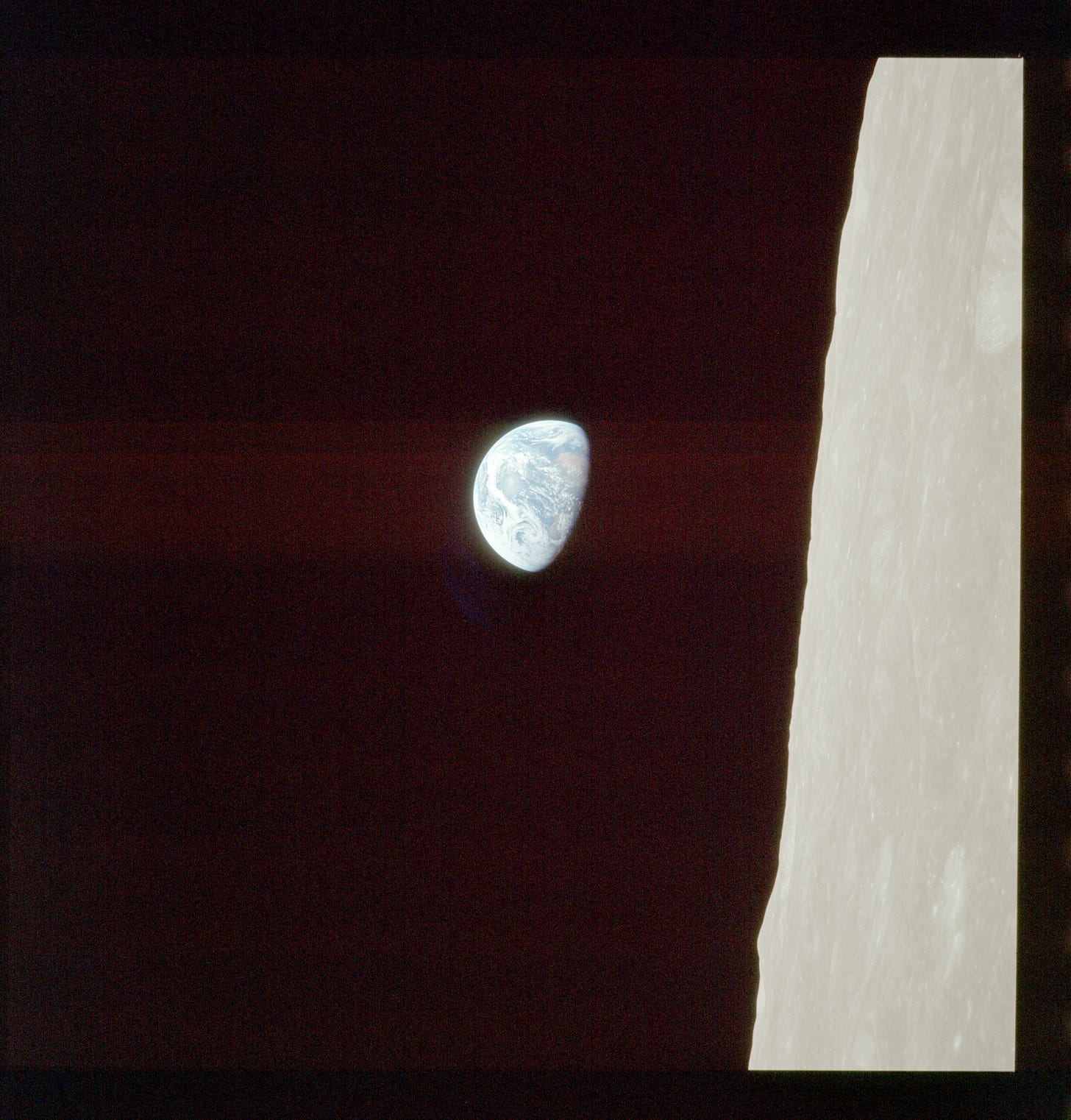
2008 JSC Scans
This set is very similar to the aforementioned JSC scans, and was likely made with a similar scanner, apparently around 2008. There are a few differences though.
Some of these are downloadable from NASA’s Gateway to Astronaut Photography of Earth, I’ll take AS08-14-2383 as an example. You can view it here, and you’ll notice that you can download the previously mentioned 2005 JSC scan on there. Up until very recently you could go to the “Download Options” section and select “Request Raw file from camera”. That button has disappeared but the link it would take you to still exists here. On there you have to wait 5 minutes for the file and it should download. What you get is a 189 MB 5700x5800 16-bit TIF file, shown below.
These also have a characteristic scanning artifact, though it is more subtle. In the image below you’ll notice that the streaking across bright objects is a lot fainter than on the 2005 scans. Also, if you look closely to the left side of the frame, there is a sort of faint line/separation with blueish light to one side. Of course, without brightness adjustments this is hardly visible, but still worth pointing out.
ASU Scans
This set was made by the Johnson Space Center in partnership with the Arizona State University.
It is unclear exactly when these were scanned. It seems that the project was started in 2006, with scans of photographs taken by the Apollo 15, 16 and 17 Mapping and Panoramic Cameras being progressively published on the Apollo Image Archive.
Hasselblad photographs scans were done and published later on March to the Moon, but it is unclear when exactly.
In the about section of March to the Moon we get this information :
Apollo scans are acquired with a Leica DSW700 photogrammetric scanner allowing for very high geometric and radiometric fidelity. In addition, the films are scanned at very high spatial resolutions up to 200 pixels/mm (5 microns) and an extended bit depth (14-bit A/D) in order to ensure that as much of the information content of the film is preserved.
The real advantage of these is the resolution. It it much higher than that of the 2005 and 2008 JSC scans (roughly twice and thrice the resolution, respectively). But unfortunately, these have many scanning artifacts.
A typical unprocessed color ASU scan looks very dark (not that this is necessarily a bad thing in itself, raw scans aren’t meant to look pretty).
Inversely, a typical B&W negative ASU scan looks very bright.
Comparing JSC & ASU scans
To highlight the scanning artifacts of ASU scans, they are shown next to JSC scans. Mostly 2005 JSC scans were used for the comparisons.
Except when stated otherwise, the JSC scans are shown on the left side, and the ASU scans on the right side.
All images have been enhanced (extremely brightened or darkened in some cases) to make artifacts as obvious as possible. Clicking on the images to enlarge them is recommended.
Streaking/Lines - B&W Photos
These streaking artifacts are very common. A few examples are shown here but they are present on most if not all B&W scans.
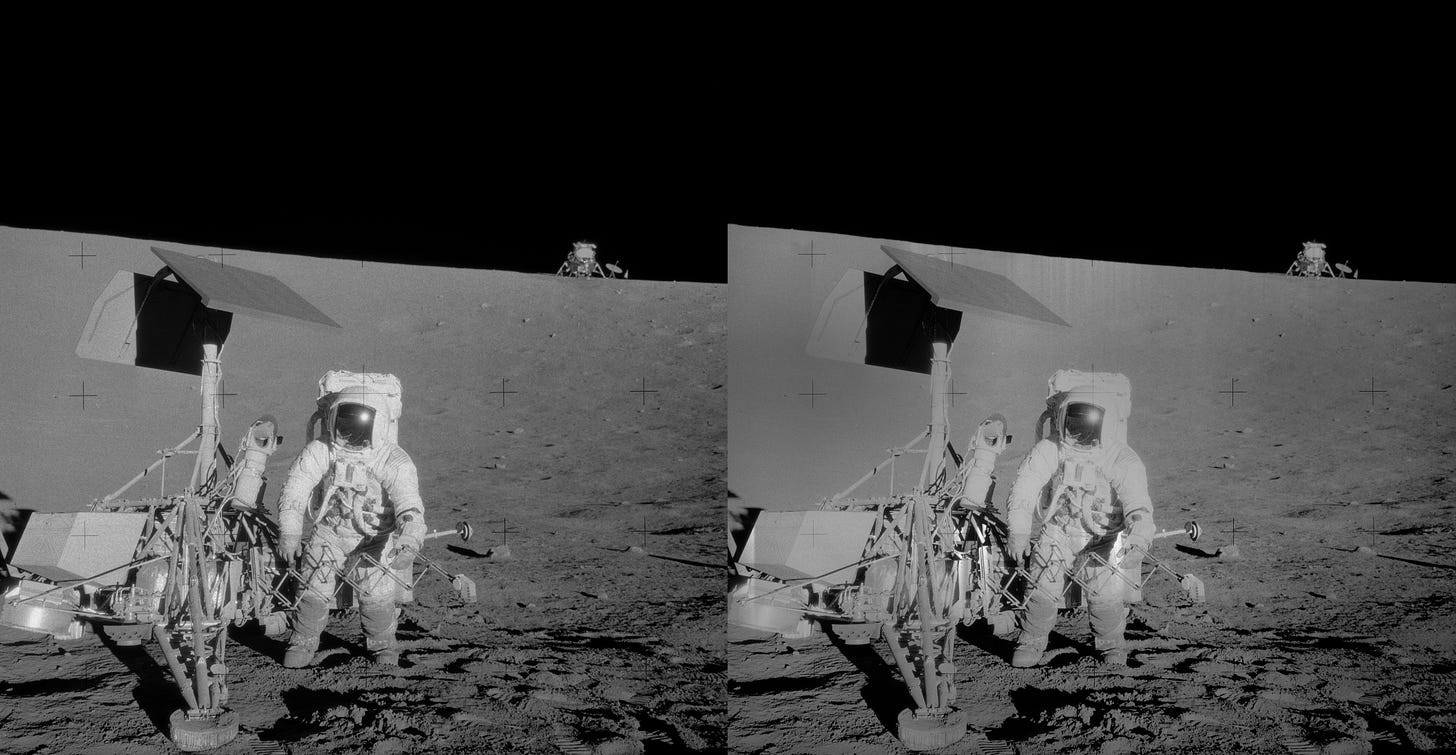
Underexposure - B&W photos
ASU scans are said to have an extremely good dynamic range. Quoting from March to the Moon’s about page :
the films are scanned at an extended bit depth (14-bit A/D) (16,384 shades of grey) in order to ensure that as much of the information content of the film is preserved.
It is surprising then to find that some JSC scans, which have a lower bit depth — and were downloaded as mere compressed JPG files for this post — manage to actually capture more information in even the darkest parts of the most underexposed photographs.
Glare - Color Photos
Glare is present on every single ASU scan of a color slide, probably introduced during the scanning process itself. It has the same general pattern on each frame, but is still slightly different every time, making it challenging to remove accurately.

It is worth mentioning that ASU provides processed versions on their site that attempt to get rid of this glare by subtracting a fully dark frame (with only the glare on it) from the raw scan. The results vary, it works fairly well on darker photographs where the glare tends to be quite consistent, but it doesn’t work as well on brighter photographs where the glare is more erratic.
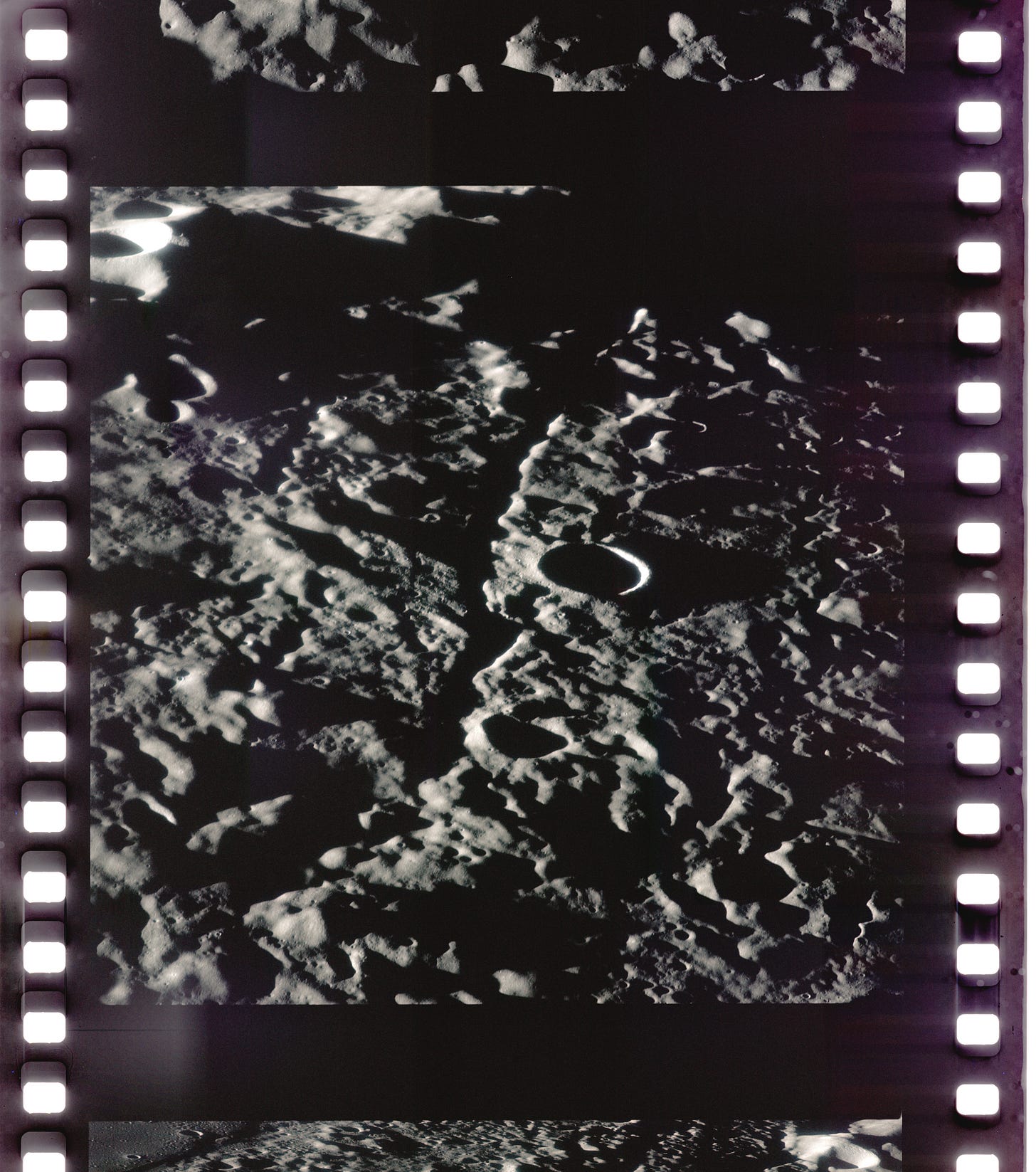

it also looks like the Apollo 7, 9 and 13 photographs were scanned differently, so that the glare is rotated by 180° compared to scans of other missions. This wasn’t taken into account and the same flat-field correction was applied anyway, which ends up with the glare not being properly removed at all.

Streaking/Lines - Color Photos
Very similar to the ones on the B&W negatives mentioned earlier, but this time in color. These are unfortunately very frequent too.
Overexposure - Color Photos
Again, one of the main benefits of the ASU scans is supposed to be the great dynamic range, and again it gets outclassed by the JSC scans. Some of the brightest photographs have regions that are overexposed in the former but not the latter. The two following examples use the 2008 JSC scans for the comparison.
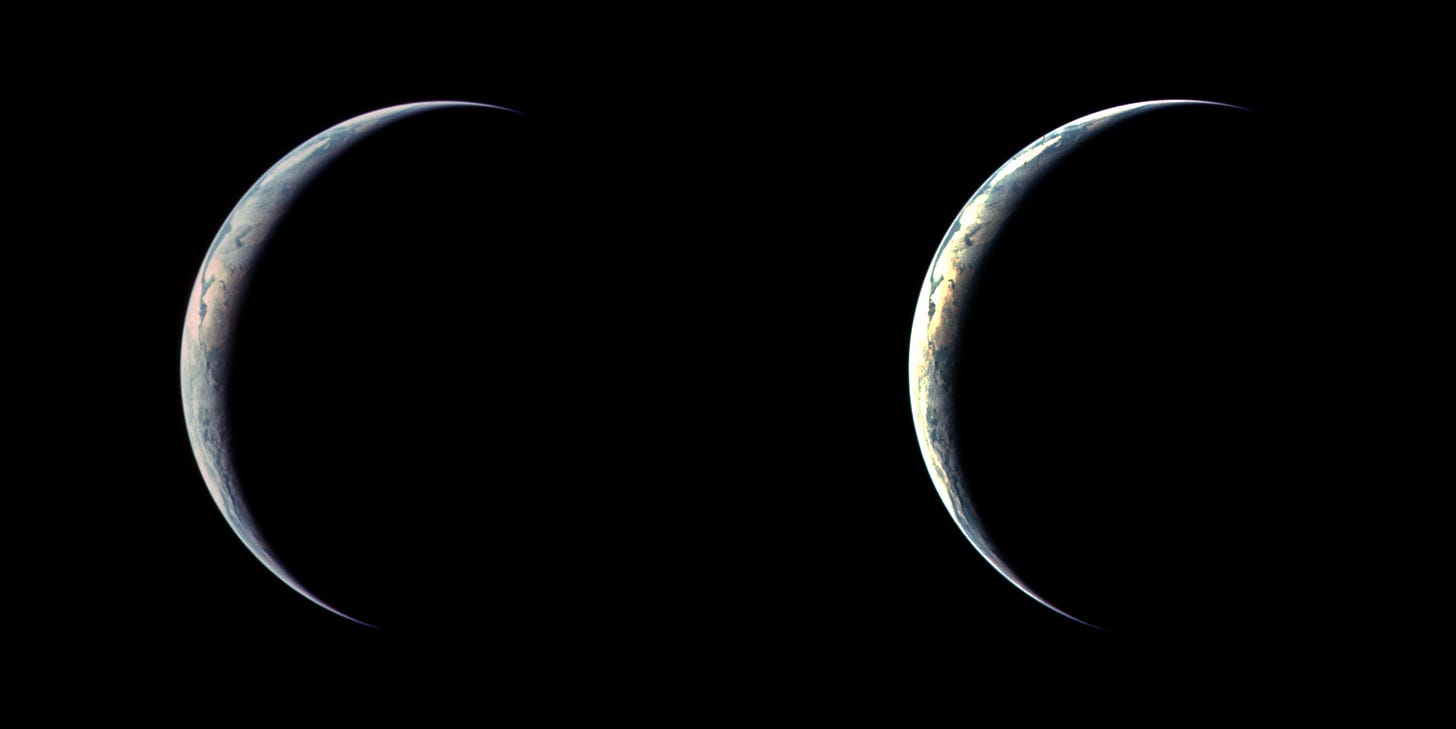
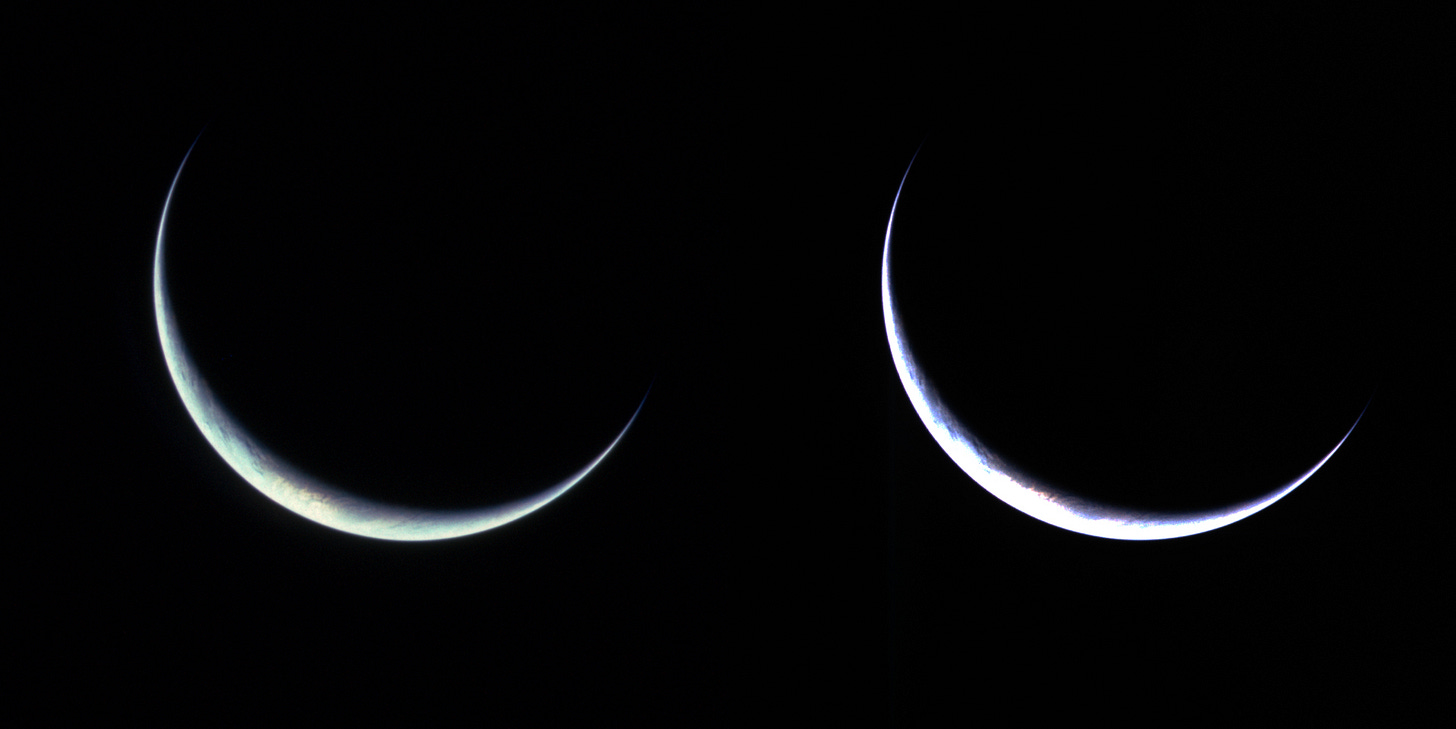
Debris
This is not really a scanning artifact, but ASU scans seem to strangely have a lot more debris and gunk on them compared to the previous sets of scans. This is well illustrated by the example below.
Conclusion
In the end, it seems like the 2008 JSC scans are generally the better ones despite not reaching the ASUs’ huge resolution. Unfortunately, at the time of writing this post, JSC scans of Apollo photographs are available nowhere in raw format, only compressed.
It is unclear exactly what went wrong with the ASU scans. Since the Metric and Panoramic photographs from Apollo 15,16 and 17 were scanned first and contain practically no scanning artifacts, we could theorize that the scanner was chosen solely for those, and that scanning the Hasselblad photographs was only an afterthought, and it turned out that the scanner was not exactly appropriate for that task.
Like mentioned at the beginning of this post, hopefully these priceless photographs will get scanned again in the future, ideally with a similar resolution as the ASU scans but without any artifacts.





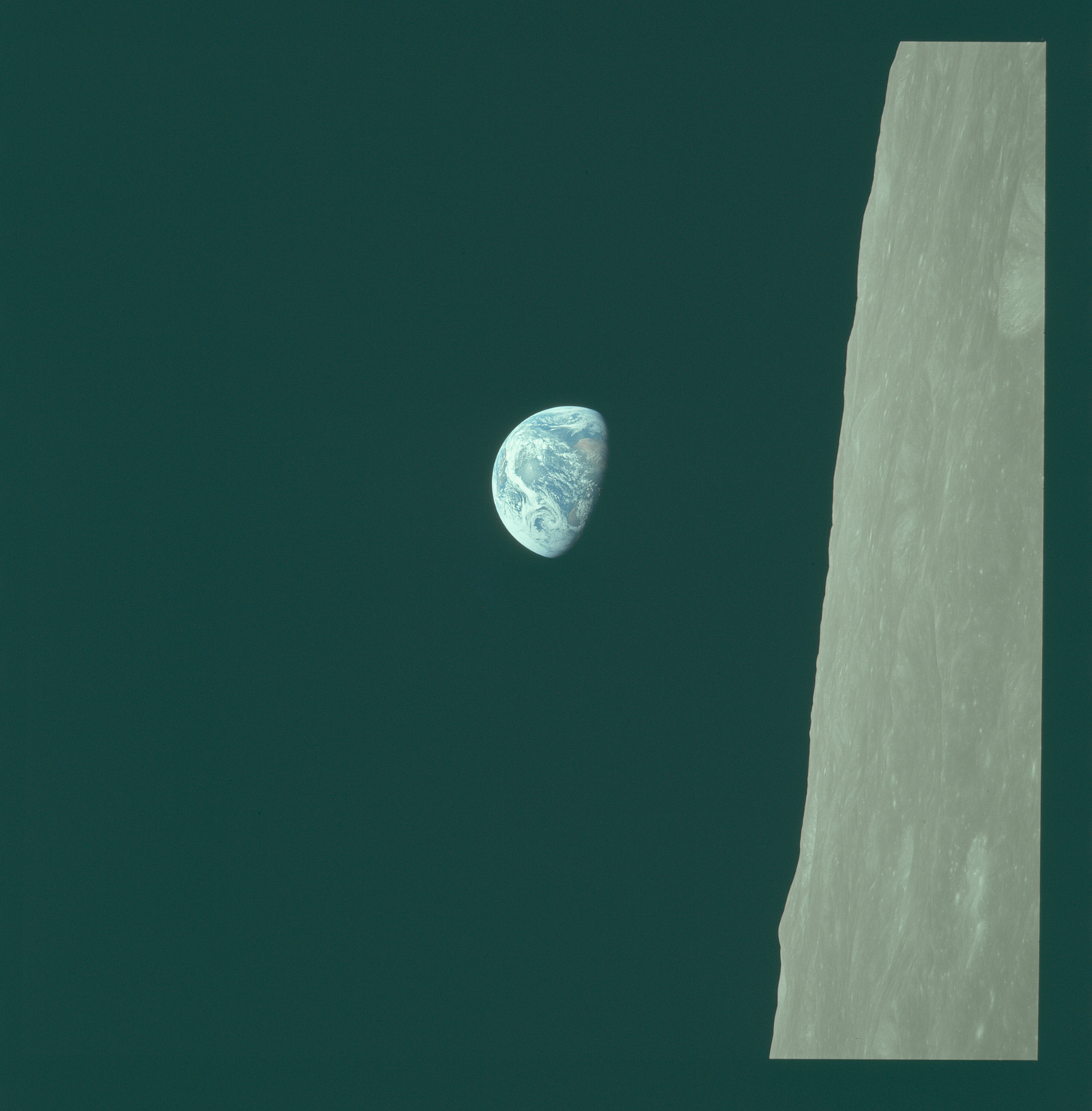
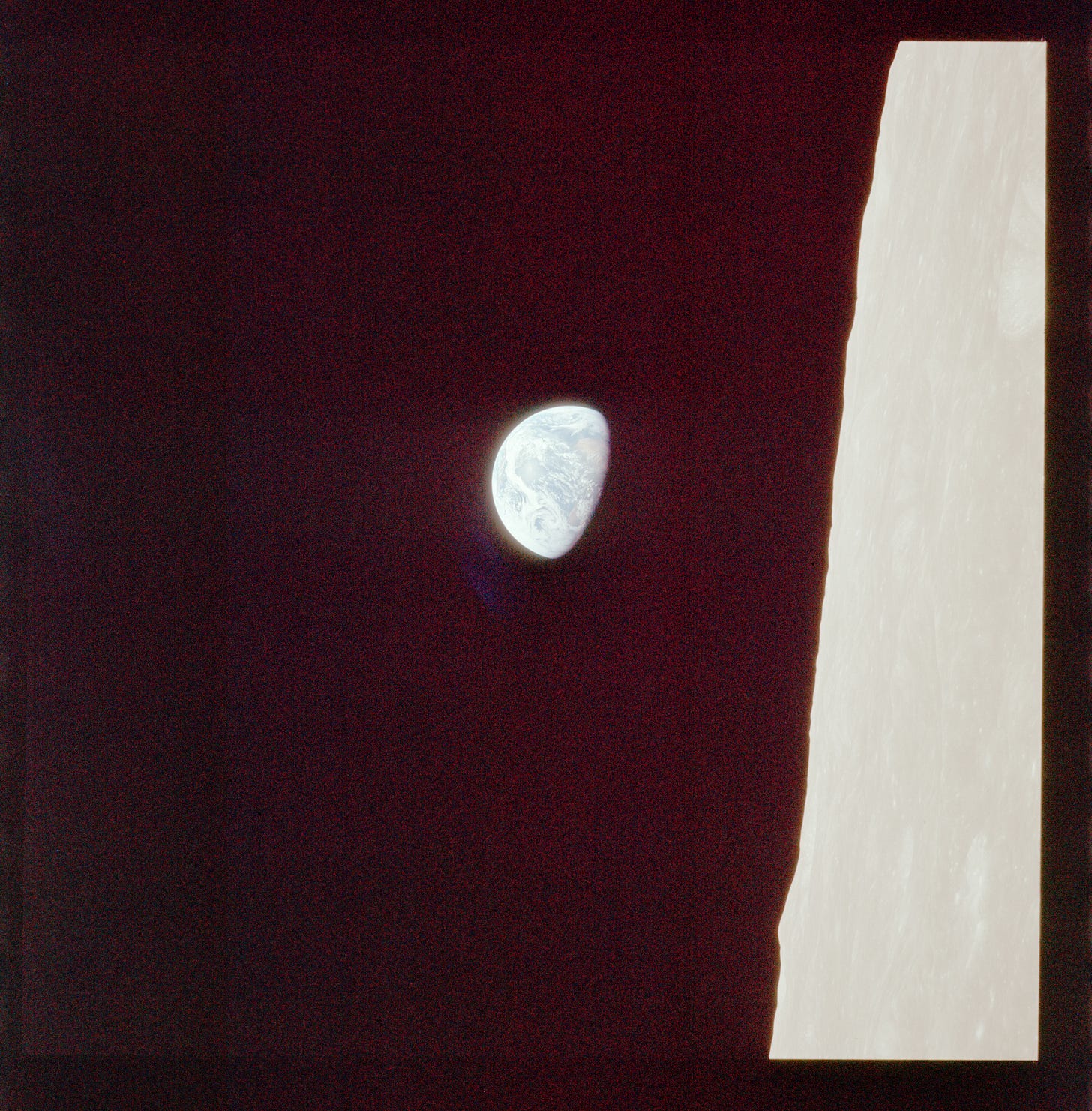
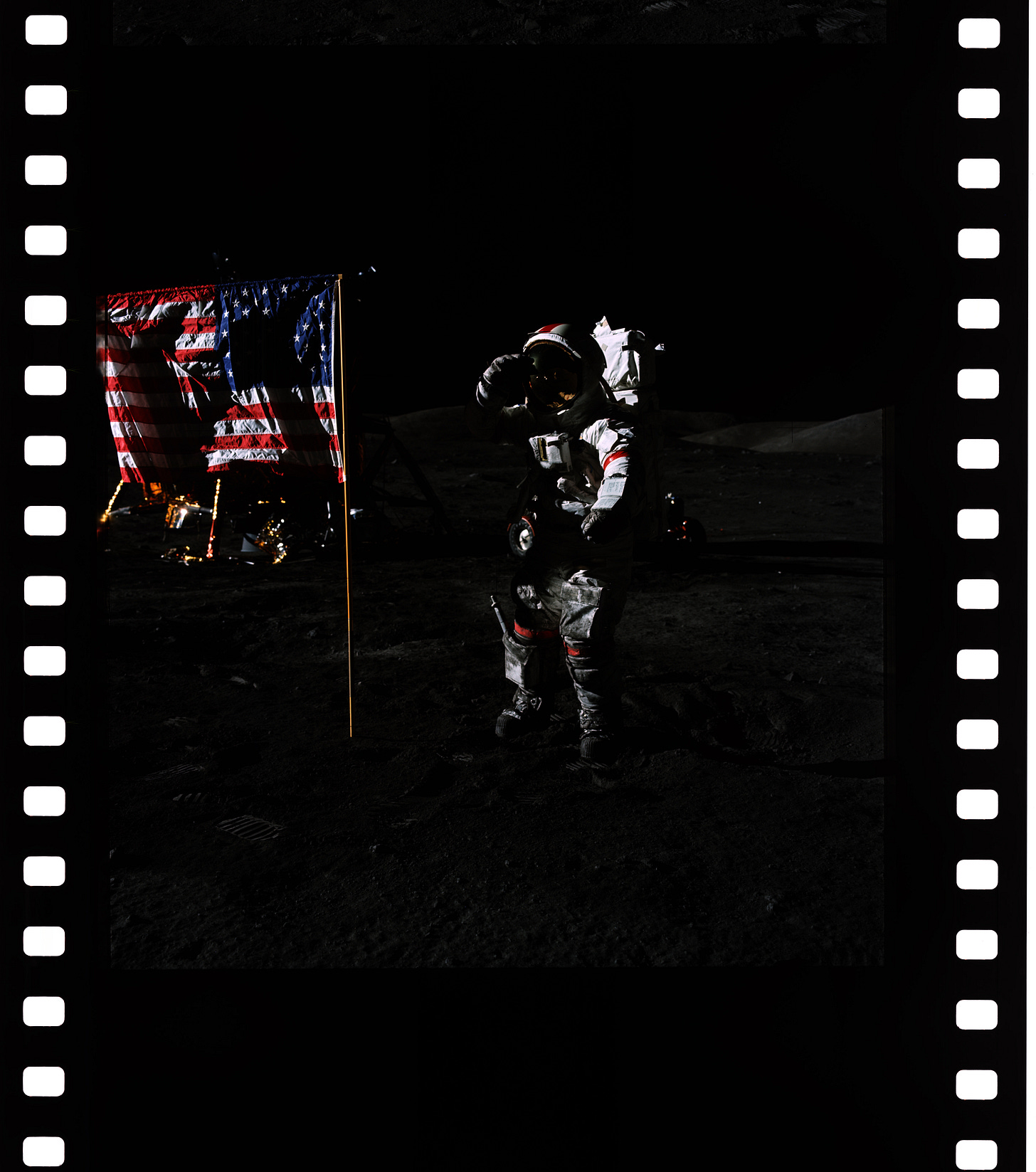

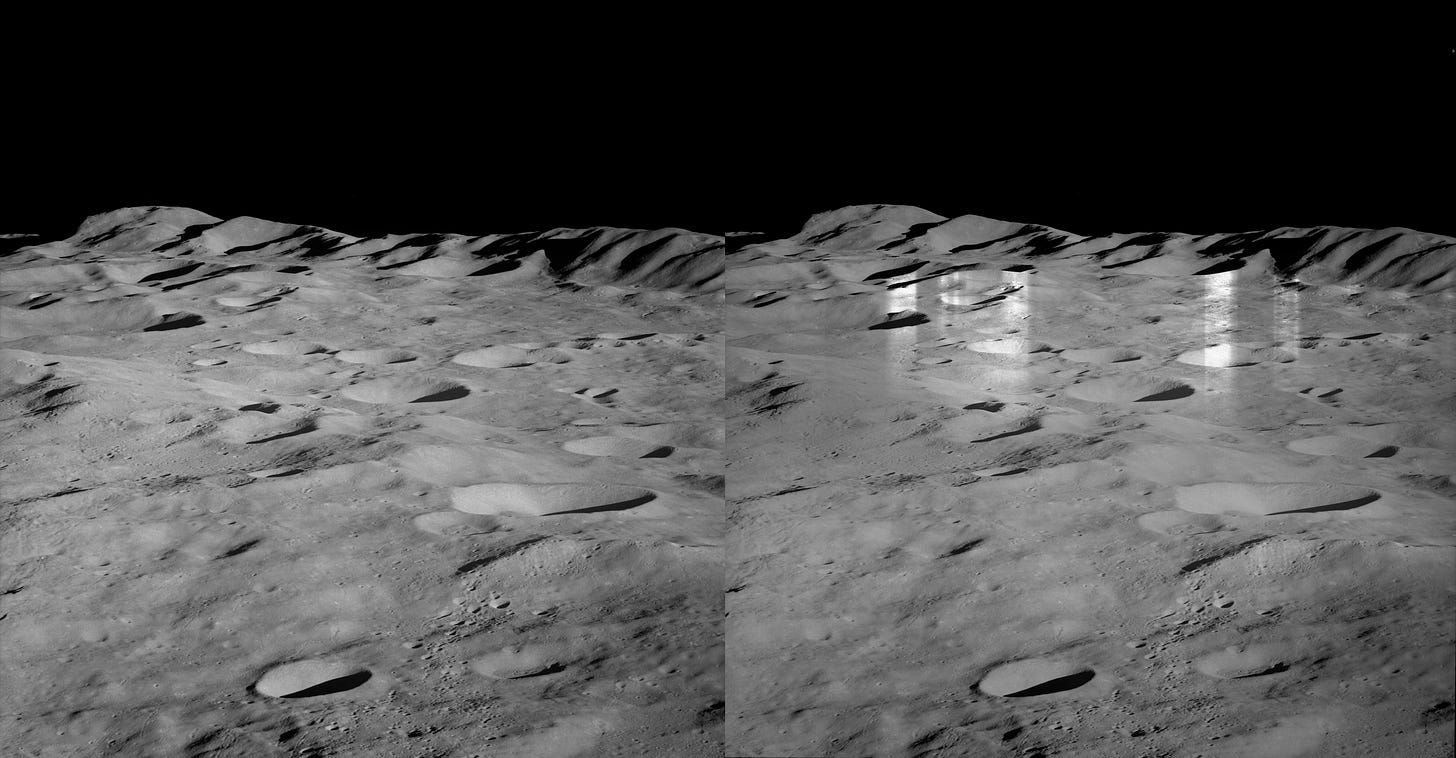

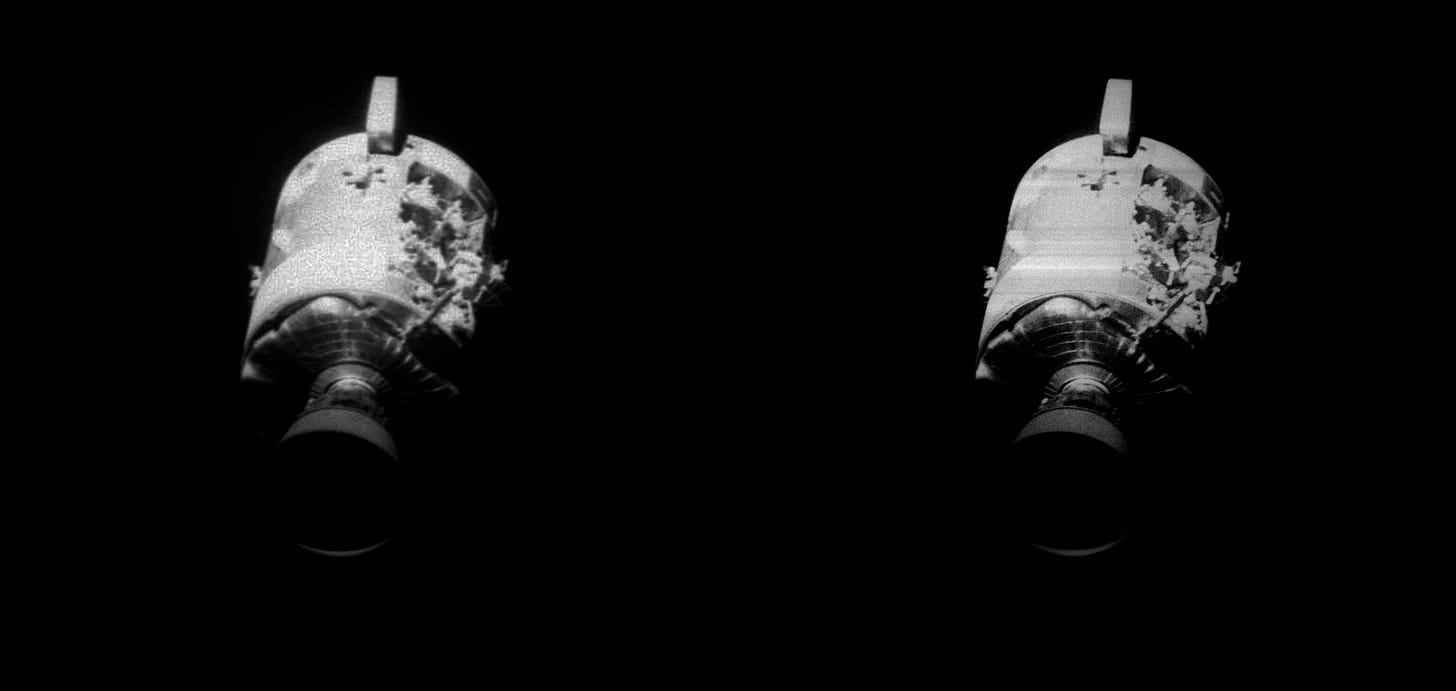
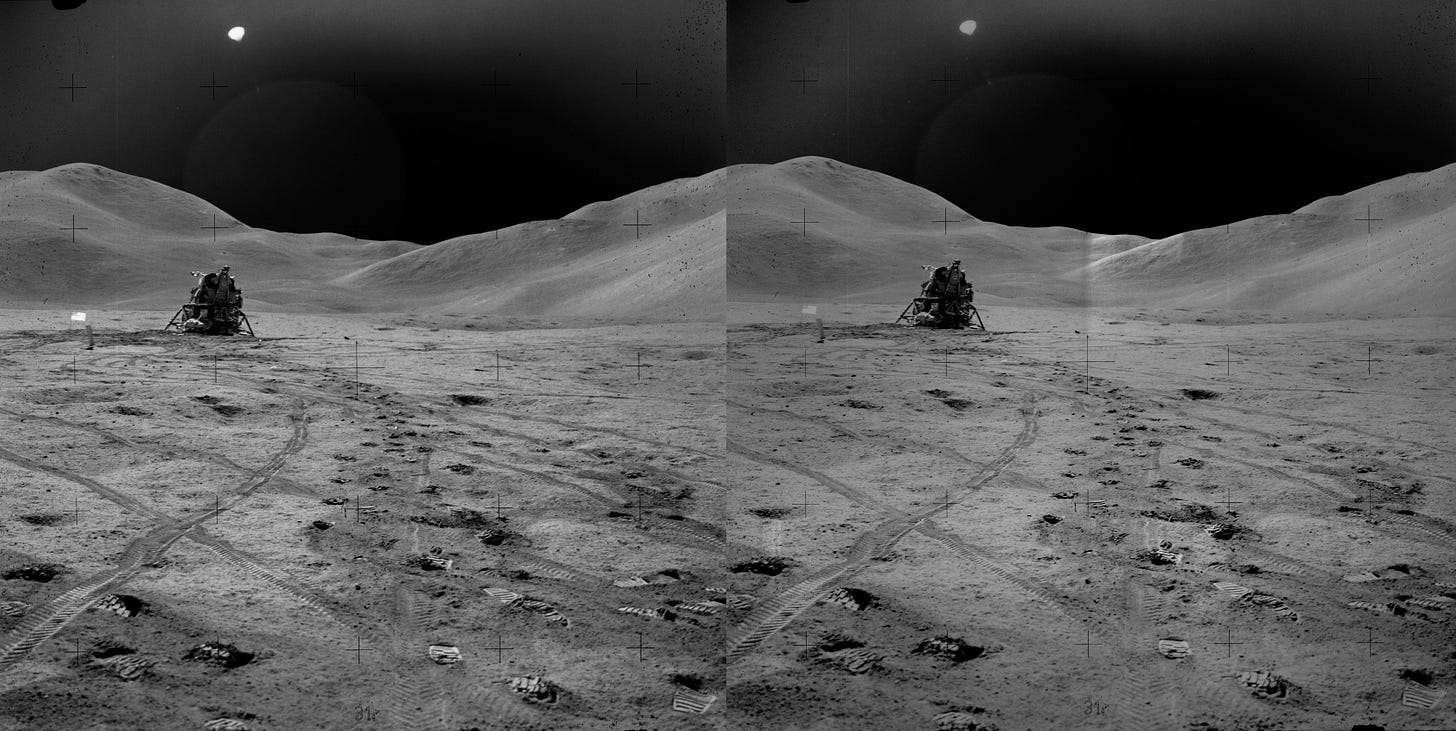






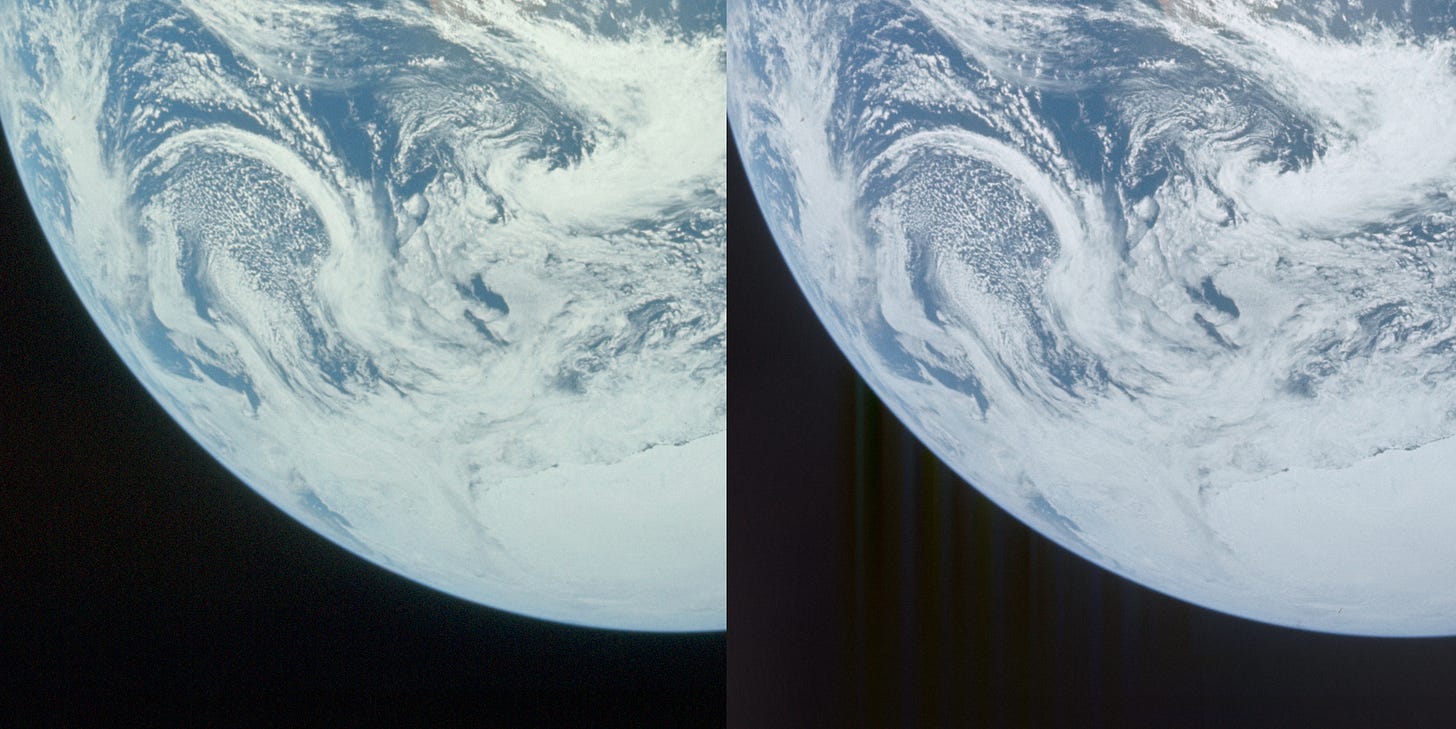


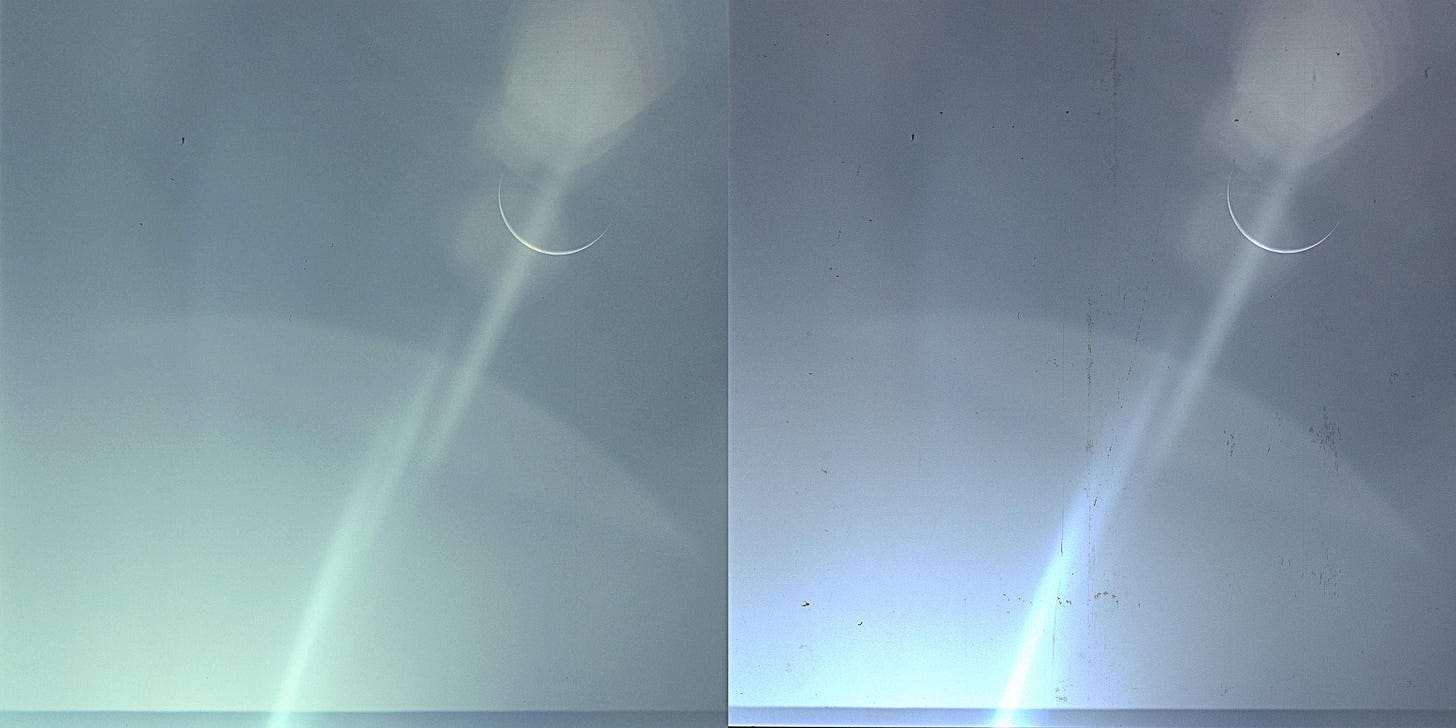
But... why the green tint for the 2005 scans? ...Was it green tech (green as in "immature") or some unwanted scanner defect?